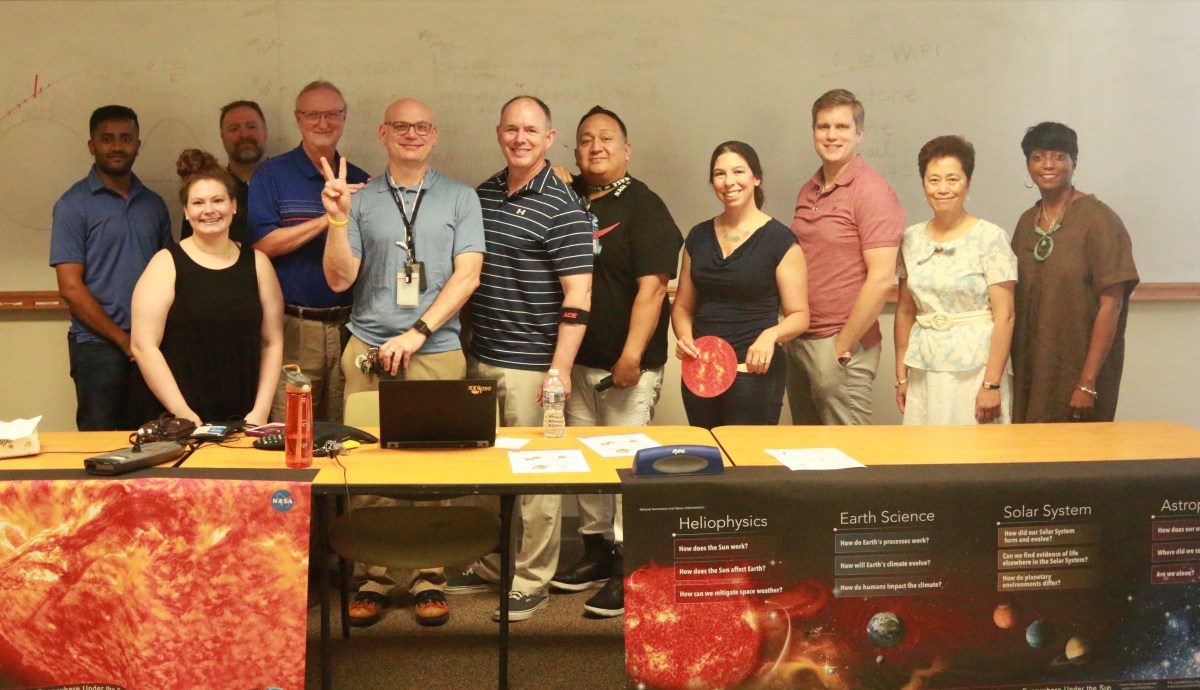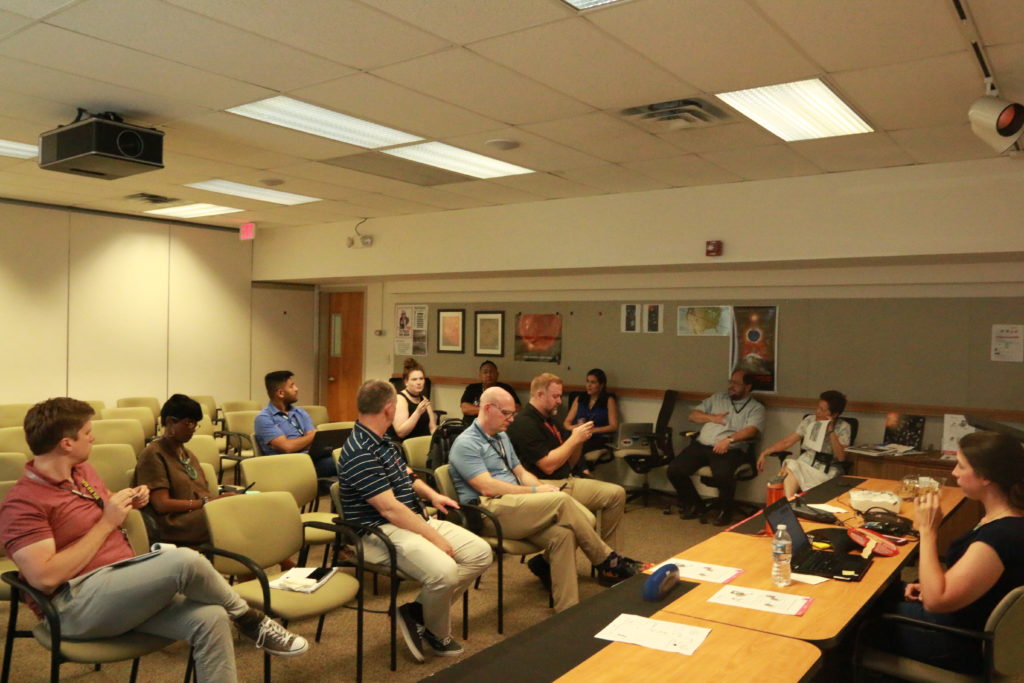Today, we had the big team meeting prior to flying down to Kennedy Space Center. We discussed everything from the big picture to the finest of details, all to ensure the American people receive the best support possible. We went through contingencies, scheduling, logistics, more contingencies, events, equipment, science and engineering message, and even more contingencies.
This morning, Alex Young and Shannon Reed led the meeting by addressing the entire team in a supportive and exciting manner that reflected the electricity in the room. Laying out all the activities to the whole team highlighted to all of us, as if we didn’t all suspect, that we have arranged an incredibly jam packed week – from interviews with the media to open forums with children and the American people at Kennedy Space Center, and to supporting QnA’s with real NASA scientists throughout the week.
Myself, I have being developing the Virtual Reality environment with support from the team for almost 2 years now. As a solar and space weather scientist, I was part of the team that made the only camera on the Parker Solar Probe – It is called WISPR and was made by the Naval Research Laboratory.
This will be the first time humans will have sent a camera so close to the Sun in order to observe and measure inside the solar atmosphere. I realized early on, that what we will see in the solar atmosphere might not be what we expect. We have several theories and estimations, but the Sun is an extremely complex and dynamic ball of hot plasma. I believe the camera pictures will be initially very difficult to interpret, and thus I went about trying to create a VR environment so that scientists can generate complex simulations of the solar atmosphere using super computers and we can replicate exactly what WISPR will see in our VR headset. This was a complex problem because not only did we have to find a solution to visualizing a large 3D cube of data in VR (which is very computer hardware intensive), but we also had to create a solution of how to replicate the mechanism by which the WISPR camera operates (the light it sees is generated by behavior of Thomson scattering from free electrons in the solar atmosphere).
Want to know more science about what questions we hope to answer with Parker? or engineering questions of how we built the instruments and spacecraft? then come find me and other NASA scientists, and ask us questions.
We will be at the Kennedy Center on Friday Morning (08/10) and Saturday afternoon (08/11), as well as all day Sunday (08/12) and Monday (08/13).


